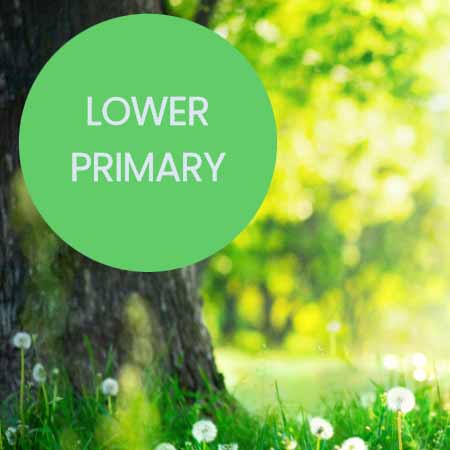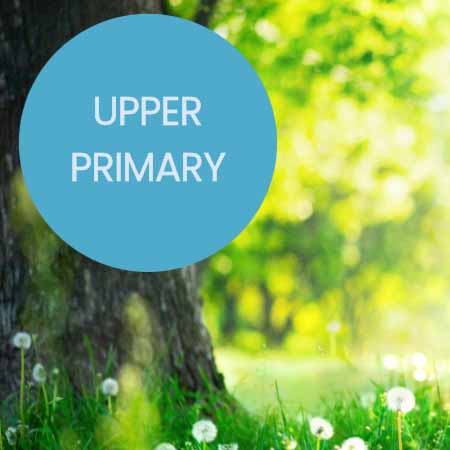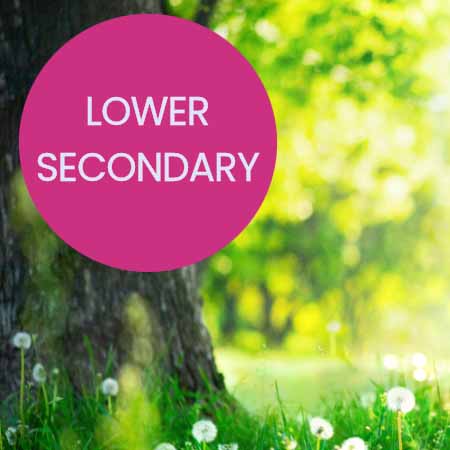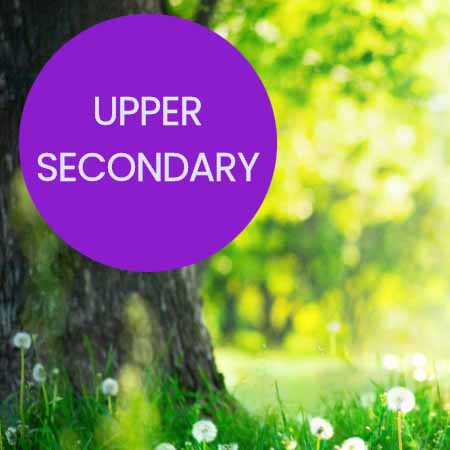LOWER PRIMARY | UPPER PRIMARY | LOWER SECONDARY | UPPER SECONDARY
PEACE AND KINDNESS
LOWER PRIMARY
1. Orienting activity
• Start with some peace out Yoga from Cosmic Kids
Flopometer (Peace Out: Guided Meditation for Kids) | Cosmic Kids
• Introduce the concept of peace and kindness by showing pictures of peaceful scenes (eg, children sharing, families together). Ask students what ‘peace’ means to them. Encourage simple words or gestures, and discuss how it feels to be kind or to share.
• Read ‘What Does Peace Feel Like?’ by Vladimir Radunsky
After reading questions:
- How do the children in the story describe what peace feels like?
- Can you think of a colour or sound that makes you feel peaceful?
- What does peace feel like to you? Does it feel warm, cool, or something else?
- Can you think of a time when you felt peaceful? What was happening?
- The book talks about how peace smells, tastes, and sounds. What do you think peace might smell or taste like for you?
- Which description of peace in the book is your favourite? Why?
- What can we do to make others feel peaceful, like the children in the story?
- How could you help a friend feel peaceful?
• Read ‘I Can See Peace’ by Julie Penshorn, Jeanine-Jonee Keith (Illustrator)
Read aloud: Kids Books Read Aloud | I CAN SEE PEACE | Story Time Pals
After reading questions:
- Where does the main character see peace in their everyday life?
- Can you think of a place where you feel calm and safe, like the places shown in the book?
- How does the character feel when they see peace around them?
- What are some things that make you feel happy and peaceful?
- The character finds peace in different things, like nature and kindness. Where do you see peace in your own life?
- If you could show someone else peace, what would you show them?
- What are some ways you can bring peace to others, like the character in the story?
- How can we be kind to people to make them feel peaceful?
2. Storytime
Consider reading one or a selection of these books:
Book 1: ‘Peace in My World’ by Syeda Mleeha Shah
Read Aloud: Peace in My World Read Aloud Kids Book – A Bedtime Story with Dessi!
Book 2: ‘Peace in Our World’ by Paula Groothuis
Book 3: Read: ‘I Am Peace, A Book of Mindfulness’ – by Susan Verde
Read aloud: ‘I Am Peace, A Book of Mindfulness’ – by Susan Verde | Children’s Books Read Aloud by Storytime Now!
Sing along: ‘I Am Peace’ song – Emily Arrow
Book 4: ‘Peace is an Offering’ by Annette LeBox, Stephanie Graegin (Illustrator)
Peace is an offering | Read Along Story Time | Remembrance Day Audiobook Story Time for Children with Viola
3. Sing along
• ‘I’ve Got Peace in My Fingers’ by Susan Salidor, Natalka Soiko (Illustrator)
Susan Salidor’s first book for young children is based on her song, ‘I’ve Got Peace in My Fingers’.
‘Experience the Joy’: Susan Salidor reads and sings ‘I’ve Got Peace in My Fingers’
Susan Salidor’s ‘I’ve Got Peace in My Fingers’
• ‘Peace Train’ by Yousef Cat Stevens
‘Peace Train’ | Storytime Read Aloud by HarperKids
• ‘A Song of Peace for Kids’ | Jack Hartmann
• ‘Peace Like A River’ | Kids Worship Motions with Lyrics | CJ and Friends
4. Pre-reading vocabulary
Words: Peace, friend, family, love
Activity: Explain each word with simple definitions and pictures. Have students say each word aloud and draw something that makes them think of that word.
Find a supporting slideshow overview here.
5. Reading activity
Read aloud a shortened version of the prayer, emphasising phrases like ‘gift of peace’ and ‘love.’ Afterward, ask students to share how they feel when they hear these words.
Here’s a simplified and gentle excerpt from Cardinal Pizzaballa’s ‘Prayer for Peace’:
‘Lord our God, send us the gift of peace. Help us to love others and live together with kindness. Let us work for a world where everyone is treated with respect and love.’
This part emphasises kindness, respect, and a simple plea for peace, capturing the spirit of the prayer in language young children can understand. After reading, you might ask them how they can show kindness to others or help make the world more peaceful in their own way.
Comprehension questions
• Why do you think the prayer talks about peace?
• Who can we pray for to help spread peace?
• How does peace make us feel?
6. Consolidating activity
Help students connect peace with their everyday lives.
Have students create a ‘Peace pledge,’ drawing a picture of one way they can be peaceful (eg, sharing, helping others). Display these pledges in the classroom.
Resources:
‘How to draw Peace Symbol’ | Peace Symbol Easy Draw Tutorial DrawinGeek
7. Example of Jesus
Tell a simple story of Jesus showing love and kindness. Ask students how they can show kindness like Jesus.
Here’s a child-friendly version of Matthew 19:13-15, focusing on Jesus’ love and welcome for children. [insert link to slideshow contents]
Alternatively, watch: ‘Jesus and the Children’ by Saddleback Kids
8. Peace dove craft activity with scripture exploration
Materials
- White paper or cardstock
- Scissors
- Crayons, markers, or coloured pencils
- Glue
- Optional: feathers, glitter, or stickers for decoration
- Printable dove template (optional)
Scripture introduction
• Begin by introducing the verse: ‘Blessed are the peacemakers.’ (Matthew 5:9).
• Explain the verse in simple terms: ‘This means that people who help others be peaceful and who make the world a better place are special and loved by God.’
Prepare the dove shape
• If using a template, print out a dove outline. If not, draw a simple dove shape on the white paper. The dove should have a rounded body, a pointed tail, and wings spread out.
• Have the children cut out the dove shape. (You can assist with this step if needed.)
Decorate the dove: Using crayons, markers, or coloured pencils, let the children colour their dove. Encourage them to use bright colours and patterns.
Optional: Add feathers, glitter, or stickers to make the dove more festive and personal.
Add a peace message: Once the dove is decorated, help the children write or draw something that represents peace or being a peacemaker. They could write the words ‘Peacemaker’ or ‘I can be a peacemaker!’ on the dove or draw symbols like hearts or hugs.
Assemble the craft:If the dove has wings, help the children gently fold the wings up to give it a three-dimensional look. Glue any additional decorations or feathers onto the dove as desired.
Display the peace doves: Once the doves are complete, display them around the classroom or have a special ‘Peace wall’ where everyone can share their creations.
Discussion
After the activity, gather the children in a circle and invite them to share their dove and what being a peacemaker means to them.
Encourage them to think about ways they can practice peace in their daily lives, reinforcing the message of the scripture and the importance of being kind to others.
Conclusion
This integrated craft activity not only allows children to create a beautiful symbol of peace but also teaches them about the importance of being peacemakers in a fun and engaging way.
PRAYING FOR A PEACEFUL WORLD
UPPER PRIMARY
1. Orienting activities
• Start with some peace out Yoga from Cosmic Kids
Rainbow Waterfall (Peace Out: Guided Meditation for Kids) | Cosmic Kids
• Discuss the meaning of peace and why it’s important. Ask students about times when they feel peaceful versus times they feel angry or frustrated. Ask them to brainstorm ways to bring peace to those situations.
• Suggested reading: ‘Folktales for a Better World: Stories of Peace and Kindness’ by Elizabeth Laird, Mehrdokht Amini (Illustrations)
• Guided drawing: ‘How to draw the peace sign in a few easy steps: drawing tutorial for beginner artists’ by Easy Drawing Guides
The V sign is a hand gesture with the palm outward, showing the index and middle fingers raised while the others are closed. Initially used to signify victory during World War II, it later became a symbol of peace in the 1960s, particularly among anti-Vietnam War activists.
2. Pre-reading vocabulary
Words: Peace, reconcile, dignity, justice, freedom
Activity: Define each term and provide examples. Use scenarios or role-play to illustrate concepts such as reconciliation and dignity.
This slideshow overview will guide students through the vocabulary learning process while providing engaging visuals and interactive scenarios to enhance their understanding.
3. Reading
Read aloud sections of the ‘Prayer for Peace’ By Cardinal Pierbattista Pizzaballa, the Latin Patriarch of Jerusalem, stopping to explain complex parts. Ask students to rephrase parts of the prayer in their own words. (scroll down in attachment)
After reading comprehension questions
• What does the prayer ask God to help us do?
• Why do we need the Holy Spirit’s help to create peace?
• How does the prayer say we should treat other people?
4. Consolidating activity
Have students write a short ‘Peace promise’ on how they’ll be a peacemaker in school or at home. Collect and display these on a ‘Wall of peace.’
5. Read
Read ‘The Prodigal Son’ (Luke 15:11-32). You will find a summary here.
Discussion points for students
• Discuss how the father forgave his son and welcomed him back without judgment. Talk about the importance of forgiveness and the joy that comes from reconciliation.
• Ask the students how the older brother might have felt and why. Discuss the challenges of forgiveness, even when we think it’s not fair.
• Encourage students to think about their own lives. Are there people they need to forgive? How can they show forgiveness and promote peace in their friendships and families?
6. Scripture exploration
Verse: ‘Love your enemies and pray for those who persecute you.’ (Matthew 5:44)
Activity: Discuss the verse’s meaning. Lead a discussion on why this is challenging and what it means for peace, then create a group artwork reflecting kindness toward others.
7. Peace circle and peace offering
Materials
• A soft item to pass around (like a small stuffed animal, a peace symbol, or a decorative stone)
• Paper and markers or coloured pencils
• A peace-themed banner or poster for students to contribute to (optional)
Activity steps
• Setting the scene: Arrange the students in a circle, creating a warm and welcoming atmosphere. Explain that they will have the opportunity to pray for peace in their own special way.
• Creative prayer circle:
- Pass the peace symbol: Introduce the soft item (eg, a stuffed animal) as a ‘peace symbol.’ Explain that as they hold the item, they can share a short prayer or thought about peace. They can either say something like, ‘I pray for peace in my family’ or simply state one word that represents peace to them (eg, ‘love,’ ‘friendship’).
- Guided reflection: After everyone has had a turn, you can lead a short, guided reflection prayer, asking God to help everyone embody peace in their actions and relationships.
• Peace offering:
- Personal commitment: After the prayer circle, provide each student with a piece of paper and markers. Ask them to write or draw one specific action they will take to promote peace in their daily lives. This could be something like ‘I will help a friend’ or ‘I will listen to others more.’
- Sharing and displaying: Invite students to share their peace commitments with the group as they feel comfortable. If time allows, they can also attach their commitments to a peace-themed banner or poster that can be displayed in the classroom.
• Closing together: Conclude with a final group prayer, thanking God for their commitments to peace and asking for guidance as they strive to be peacemakers in their daily lives. You might say, ‘May our words and actions reflect your love and peace, today and always.’
LEARNING THE VALUE OF PEACE FROM THE EXPERIENCE OF THE VIETNAM WAR
LOWER SECONDARY
1. Orienting activity
Set the stage for learning about the Vietnam War and the ANZAC Spirit.
• Begin with a class discussion: ‘What does it mean to honour someone’s memory?’ or ‘What does the ANZAC Spirit represent to you?’
• Engagement: Show a brief video clip or images of Australian students on historical study tours or a summary of the Vietnam War to provide background context.
Resources
I Was Only 19 (Redgum) – Words & Photo Montage by Paul Cohen
Note from Paul Cohen: ‘I Was Only 19’ or ‘A Walk in the Light Green’ is the most widely recognised song by Australian group Redgum. It was released in March 1983 and is a first-person account of a typical Australian infantry soldier’s experience in the Vietnam War. I put this video together, to use with my class as an educational tool in the lead-up to Anzac Day each year. I realise that some of the photos used are not from the Vietnam War and don’t involve Australian troops, but feel that they add to the feeling of the clip. Thanks for watching!
ANZAC Day: Redgum’s John Schumann Performs ‘I Was Only 19’ | Studio 10
I Was Only 19 lyrics
I Was Only 19 (triple j Like A Version) by The Herd
Lest we forget by ABC education
• Mindful colouring: Students meditate on the concept of peace while colouring in.
Resources
Guided meditation for world peace | 5-Minutes by Creative Mind
Mindful peace colouring
2. Pre-reading vocabulary
Words: Legacy, sacrifice, remembrance, storytelling, ANZAC spirit
Activity: Define each word with simple examples. Have students share what each term means to them or connect it to their family history, if possible.
Engagement: Encourage students to sketch symbols that represent each term (eg, a candle for remembrance, a heart for legacy).
3. Reading activity
Understand the experiences and reflections of South Australian students on the PASSP trip to Vietnam.
Activity: Read From textbooks to trenches by Gabrielle Elias. South Australian teens honour Vietnam War legacy on historic journey.
Comprehension questions:
• What do you think Mehar Bains meant when she described the contrasts between life in Australia and Vietnam?
• How did the storytelling sessions help students connect with history?
• Why is it important to share and preserve the stories of people who served in wars?
4. Consolidating activity
Deepen understanding of historical empathy and the power of stories.
Activity: In groups, students select one story from the reading that they found most moving and summarize it. Each group presents their summary and explains what this story taught them about sacrifice and remembrance.
5. Example of Jesus
Explore how Jesus taught love, peace, and remembrance.
Activity: Share the story of Jesus washing his disciples’ feet (John 13:1-17), a gesture of humility and love. Connect this to the theme of honouring others. Discuss how Jesus showed his followers that true leadership and remembrance come from serving and honouring others.
Reflection: Ask students how they can ‘wash the feet’ of others by showing kindness, respect, or understanding in their daily lives.
6. Scripture exploration
Verse: ‘Greater love has no one than this: to lay down one’s life for one’s friends’ (John 15:13).
Activity: Discuss what this verse means in the context of the ANZAC Spirit and the soldiers who served in Vietnam. Have students write a few sentences about what ‘greater love’ looks like in their lives or communities.
7. Culminating activity
Reflect on how students can honour those who have sacrificed for peace.
Activity: Form a peace circle. Each student shares one way they can honour others’ sacrifices in their community. They might mention ways they can show respect, keep others’ stories alive, or promote peace.
Final reflection: Conclude with a moment of silence for all those who have served in wars, followed by a prayer for peace and remembrance.
TRUTH, PEACE, AND JUSTICE IN A VIOLENT WORLD
UPPER SECONDARY
1. Orienting activity
Introduce the themes of truth, justice, and the ethical responsibilities of journalism and environmental protection in conflict zones.
Activity: Show students images or brief videos that depict journalists and environmentalists in conflict zones. Ask: ‘Why might people risk their lives to tell the truth or protect the environment?’ Follow with a brief class discussion.
Resources
Watch:
• Scientists try to assess wars’ impact on environment, climate change | VOANews by Voice of America
• Arwa Damon | 2014 IWMF Courage in Journalism Award by International Women’s Media Foundation
For more than 10 years, CNN international correspondent Arwa Damon has reported from the most turbulent areas of the Middle East, covering revolutions, popular demonstrations, war, and terrorist attacks. Based in Beirut, Damon has witnessed recent history in Libya, Egypt, Syria and Iraq, working to tell the stories of those living through conflict. She has escaped crossfire, shelling, and bombing, and has withstood criticism from government entities for her reporting.
• (optional) Award-winning journalist Arwa Damon discusses her time reporting in war zones | Spotlight by CBS News
• (optional) Lessons in compassion from the frontline | Arwa Damon | TEDxCoventGardenWomen
• (optional) How much environmental damage is Israel’s war on Gaza causing? | Inside Story
• Read: ‘What is truth?’ By Peter Fleming. The truth for Titus Brandsma was an authentic Catholic vision of humanity.
• Mindful colouring: Students complete the mindful colouring page while listening to peaceful music.
Beautiful Instrumental Hymns, Peaceful Music, Piano & Flute 'Great is thy Faithfulness' Tim Janis
2. Class discussion
Introduce students to the connection between truth, peace, and the reality of violence, and encourage them to reflect on these themes in light of global issues.
Activity
Begin by asking the students what they think when they hear the words ‘truth’ and ‘peace’ in the context of war and violence. Write their responses on the board.
Discuss: How can peace exist in a world where truth is manipulated or silenced?
Show a news clip (or give examples) of conflicts where truth is often obscured (eg, media censorship, misinformation during war). Discuss the role of journalists, the environment, and the suppression of truth.
Discussion prompt
Why is the search for truth considered essential in the pursuit of peace?
3. Read
Analyse the two articles and understand the deep connection between truth, peace, and the consequences of war.
Pre-reading vocabulary exercise
Introduce key vocabulary:
• Impunity: Freedom from punishment or consequences.
• Martyrdom: Suffering or death for a cause, often truth or justice.
• Exploitation: The unfair use of something, often for personal gain, at a cost to others.
• Peacemaking: The act of creating or restoring peace, often through justice or reconciliation.
• Falsehood: A lie or untruth, often manipulated for power or control.
Consider creating a matching game or asking students to find the definitions in a reputable dictionary.
Reading activity
Students will read both articles: ‘Shining a light in dark corners’ by Fr Andrew Hamilton SJ and ‘Truth & Peace: A Gospel Word in a violent world’. Consider creating a jigsaw exercise where students are each given a section of one of the texts to read and summarise using the Cornell note-taking method on an expert group. Students then take their learning back to their home group and share it with other students to support them in understanding the whole document.
As they read the documents for the second time independently, they should underline or highlight important points where the theme of truth and peace connects with the violence and exploitation discussed.
Reading comprehension questions
• According to Fr Andrew Hamilton SJ, how does the suppression of truth affect both the environment and the people involved in conflict?
• How does the article ‘Truth & Peace’ highlight the role of truth in the pursuit of peace, particularly in war-torn societies?
• What are the ethical challenges faced by journalists in reporting the truth in violent contexts?
• How can the values of truth and peace lead to healing in a divided world?
4. Poster making
Reflect on the role of truth and peace in today’s global context and deepen understanding of how these concepts are linked to Christian faith.
Activity
In small groups, students will discuss: What does it mean to be a ‘peacemaker’ in a world where truth is often silenced?
Groups will create a visual representation (eg, poster, mind map, infographic or sketchnote) of how truth and peace relate to each other in the modern world.
Have students share their visual creations with the class. Afterward, the teacher will facilitate a discussion on the importance of truth-telling in society and its relation to peace and justice.
5. Example of Jesus
Read John 14:6: ‘I am the way, and the truth, and the life. No one comes to the Father except through me.’
Discuss:
• How did Jesus embody truth and peace in a world full of violence and falsehood?
• How did Jesus’ commitment to truth lead to peace? Consider his interactions with individuals and groups in the Gospels.
• What can we learn from Jesus’ example of truth-telling in the face of persecution?
Reflection writing
Students will write a personal reflection on how they can follow Jesus’ example of peacemaking and truth-telling in their own lives, especially when faced with conflict or injustice.
6. Scripture exploration
Read Matthew 5:9: ‘Blessed are the peacemakers, for they will be called children of God.’ Discuss:
• How does being a peacemaker relate to speaking and standing for the truth?
• How can we live out this calling in a world where lies and violence often prevail?
Group reflection
In groups, students will reflect on the following:
• How can we apply this teaching in our modern world, especially when we are faced with conflicts or social injustices such as misinformation or environmental destruction?
• What practical steps can we take to promote peace in our families, schools, and communities?
7. Personal action plan for peace
Students will create a Personal Action Plan on how they can promote truth and peace in their lives. Their plan should include:
• Practical steps: What actions can I take to promote truth (eg, challenging misinformation, supporting ethical journalism, protecting the environment)?
• Faith in action: How can I imitate Jesus’ example of peacemaking in my daily interactions, family, and community?
• Scripture and prayer: How can I use Scripture and prayer to strengthen my commitment to peace and truth?
Students will share their plans with a partner, who will offer feedback and discuss ways to put these ideas into action.